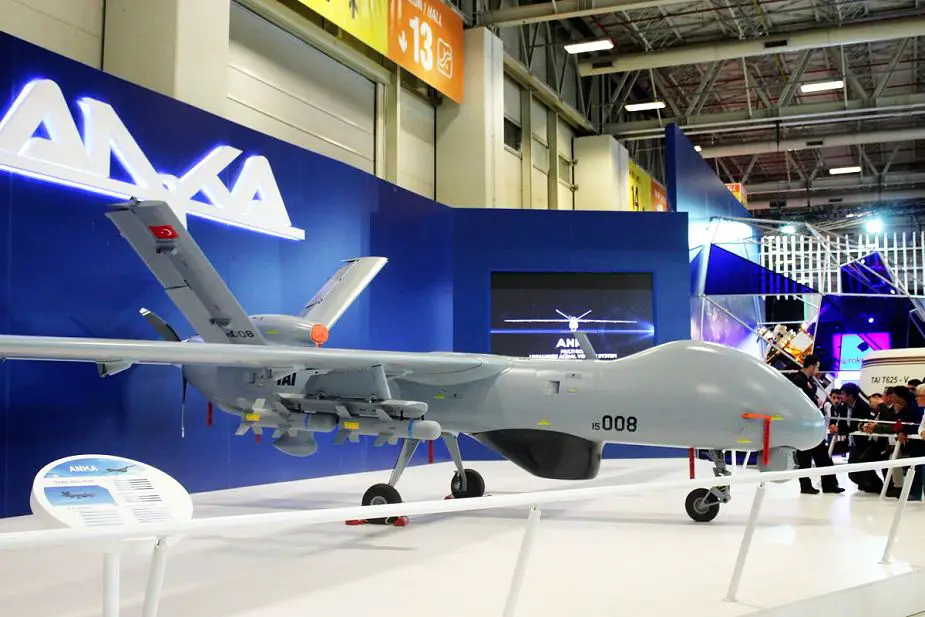Breaking news
Tunisia to purchase Turkish-made Anka-S Unmanned Aerial Vehicles.
During the Tunisian International Aerospace & Defense Exhibition which took place in Djerba, the Tunisian Ministry of Defense has signed a contract with the Turkish Aerospace Industry TAI, for the supply of the ANKA-S UAV (Unmanned Aerial Vehicle).

Turkish Aerospace Industry ANKA-S Unmanned Aerial Vehicle. (Picture source Facebook)
According to information published on Internet, Tunisia will purchase 6 UAVs Anka-S and three control centers for a total amount of $240 million. The deal was signed including technology transfer between Tunisia and TAI (Turkish Aerospace Industry) to assemble the ANKA-S locally with the possibility to sell the UAV to other African countries.
The Anka-S is a medium-altitude, long-endurance (MALE) unmanned aerial vehicle (UAV), which was designed and developed by the Turkish Aerospace Industries (TAI) for the Turkish Armed Forces. Currently, the Anka-S is deployed in Syria and was used to perform combat missions.
The whole composite airframe of Anka-S is composed of a monoblock fuselage, detachable wing and V-Tail, retractable landing gear, redundant control surfaces, avionics and payload bays and service doors. The sandwich skin structure is reinforced by composite or metallic frames, ribs, and supports. Propelled by a pusher type heavy fuel engine, the aircraft is furnished with fuselage fuel tanks and fuel system, ice protection system, environmental control system, lighting system, redundant electrical system with battery backup, and harness system.
The composite structure of Anka-S integrates an indigenously developed fully autonomous flight control computer to provide autonomous waypoint navigation and flight control. The autonomous system also enables the UAV to automatically return to the pre-defined location in the event of loss of communication with the ground control station.
The Anka-S is equipped with an electro-optic color day camera, electro-optic/forward-looking infrared/laser rangefinder/laser designator and spotter camera, as well as a synthetic aperture radar/ground moving target indicator (SAR/GMTI) and inverse SAR radar, along with satellite communications and electronic intelligence systems.

























